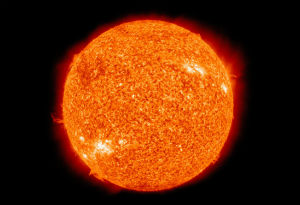Expert comment: Parker Solar Probe launch
09 August 2018

An ambitious NASA mission is seeking to send a satellite closer than ever to the sun to solve some mysteries about Earth’s closest star.
The Parker Solar Probe will be launched on Saturday (11 August) and sent into the Sun’s outer atmosphere, or corona. This will take it within 3.9 million miles of the Sun’s surface – closer than any man-made object has flown before.
The probe will take six years to reach this point, and it is hoped it will offer information as to why the outermost layers of the Sun’s atmosphere is 300 times hotter than the surface.
Professor Mathew Owens, space scientist at the University of Reading, said:
“The thing we really don't understand about the Sun, and therefore stars in general, is why its atmosphere gets hotter further away from the heat source. We've been trying to solve this mystery for more than 50 years, by taking measurements from a nice, safe distance, and it's left us in an unusual position. We've got a bunch of theories that seem to work, but don't know which ones actually explain the Sun.
“The solution, in Parker Solar Probe, is to go take measurements right in the place of interest - the Sun's lower atmosphere, where temperatures can exceed a 1 million K. It's an incredibly hostile environment in which to do science, so the spacecraft has faced enormous engineering challenges. But everything is looking positive for Saturday.”
